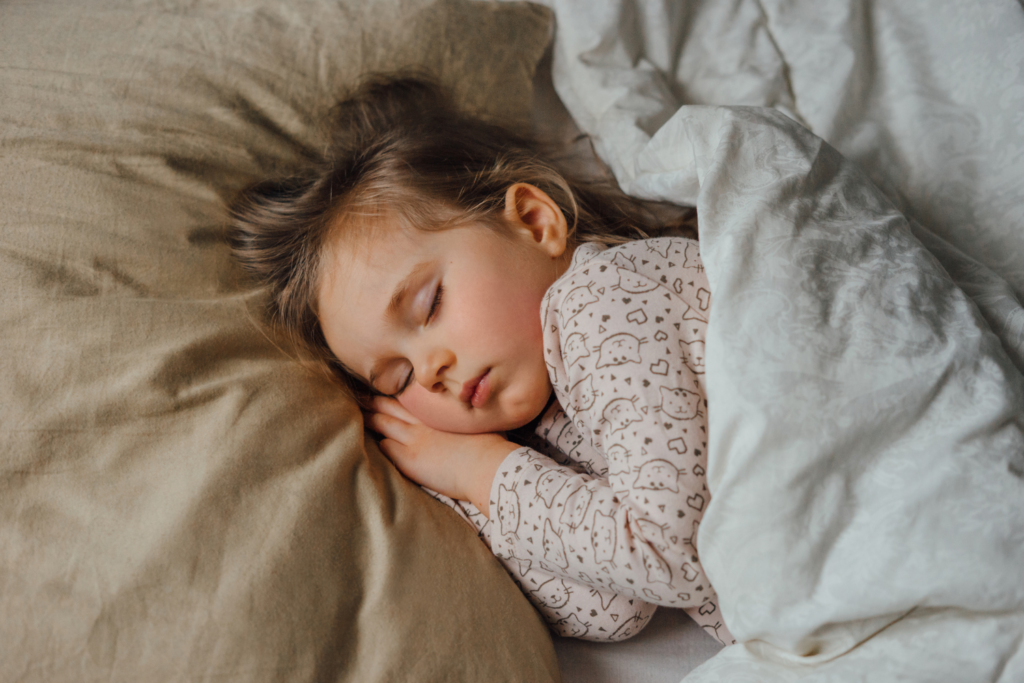Better Sleep Now: Part 1—Light


One of the most frequent conversations I have with parents is about sleep, or more specifically, lack of sleep in their children. A “problem sleeper” in the house affects everyone, and poor sleep has been linked to everything from excessive weight gain to cardiovascular disease, diabetes, weakened immune function, and mental health disorders such as anxiety and depression.
Recent studies have causally linked sleep deficiency in children to clinical Attention Deficit/Hyperactivity Disorder (ADHD). Poor sleep decreases focus and attention[1], and has been associated with diminished executive function[2] after just a single night of diminished sleep. The standard medical treatment for ADHD is stimulants like Adderall, which makes sense if an inattentive mind is also a mind that has had insufficient rest to function optimally.
That’s the bad news; the great news is that good sleep hygiene is achievable, inexpensive and usually effective at normalizing sleep, especially in children. This article on light and sleep is the first in a four part series on sleep hygiene (along with sound, temperature and the circadian rhythm). This is not an exhaustive review, but will give you some measures you can start now to normalize your child’s sleep cycle, and your own. If you feel your child may be suffering sleep disturbance due to a physical or metabolic disorder, of course see your healthcare provider.
Now let’s dive into a discussion on light and its effect on sleep.
We divine primates evolved to be active in the light of day. Night was terrifying, full of predators and stubbed toes. As a result we, like all diurnal mammals, developed a circadian rhythm to our days. As visual creatures, we get a lot of our cues about wakefulness and sleep through our eyes, specifically photosensitive ganglion cells that convert light into signals in the brain that control circadian rhythm.
In the morning, exposing the retinas to full spectrum light triggers alertness and elevates cortisol and serotonin levels in the brain, improving mood, stimulating daytime wakefulness and making sleep easier to achieve at day’s end. As little as 10 minutes of sunlight early in the morning has been shown to help with sleep that night. In the evening, the shift from full spectrum light to the red of the setting sun and then to darkness triggers the pineal gland to release melatonin, making us sleepy and ready for bed.
Trouble is, over the past century or so, we’ve filled our nights with artificial lights that trick our brains into thinking it’s still daytime and ruining our sleep in the process—a trend that has really reached its peak with the full spectrum liquid crystal display (LCD) light hitting our retinas from phones, tablets, computers and TV’s well into the night. At the same time, many of us are inside much of the time, so we miss the vital light exposure early in the day that sets our circadian clock.
To optimize sleep, it is best to use low wattage, warm bulbs to light your home after sunset, especially in the sleeping chambers. You can set all electronic screens to be “night shifted” automatically after sunset, which filters out the blue light hitting the retina. Learn how to set this up for iPhone or Android devices here.
A “screen buffer” of an hour screen-free before bed for young (and old) people has been shown to make it easier to fall asleep and produce better quality sleep. Families might fill that time with baths, books, chamomile tea and snuggling instead. A little oxytocin makes for a good night’s sleep. For children under two, screen time at any point in the day negatively impacts sleep quality, so the recommendation is zero screen time for them.
The bedroom itself should be as dark as possible during sleep. Even with the eyes closed, ambient light harms sleep structure, causes increased waking, and in recent studies[3] has been associated with health effects including increased heart rate, hypertension, decreased heart rate variability, as well as obesity and next-morning insulin resistance. For younger kids, a single night light is fine, but when it’s tolerated, aiming for darkness is ideal.
Changes in environmental light can also disrupt sleep; make sure phone notifications are off and the phone is set to “Do Not Disturb” so the screen isn’t coming to life in the middle of the night. And, although I wish it didn’t need to be said, never ever sleep or allow children to sleep with a TV on in the room. It’s just terrible quality sleep.
In future columns, we will discuss how ambient sound, temperature and setting the circadian rhythm can affect sleep. But for now try these sleep hygiene tips around light exposure and see if they help your children (and you) sleep better.
[1] https://www.ncbi.nlm.nih.gov/pmc/articles/PMC7082190/
[2] https://www.ncbi.nlm.nih.gov/pmc/articles/PMC7075226/#:~:text=It%20was%20demonstrated%20that%20sleep,attention%20and%20vigilance%20%5B13%5D.
[3] https://academic.oup.com/sleep/article/46/3/zsac130/6608953?login=false
